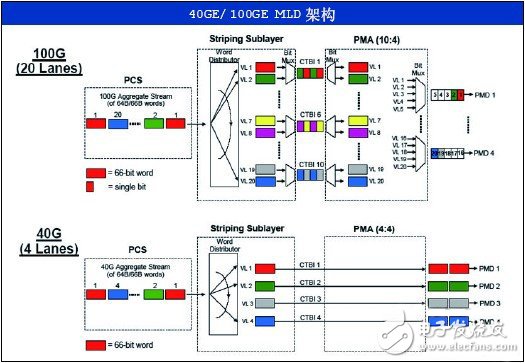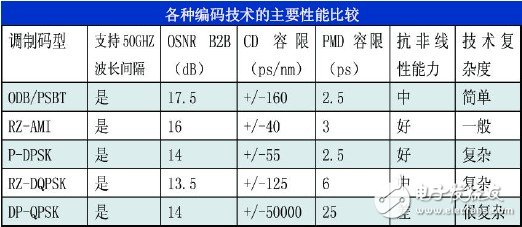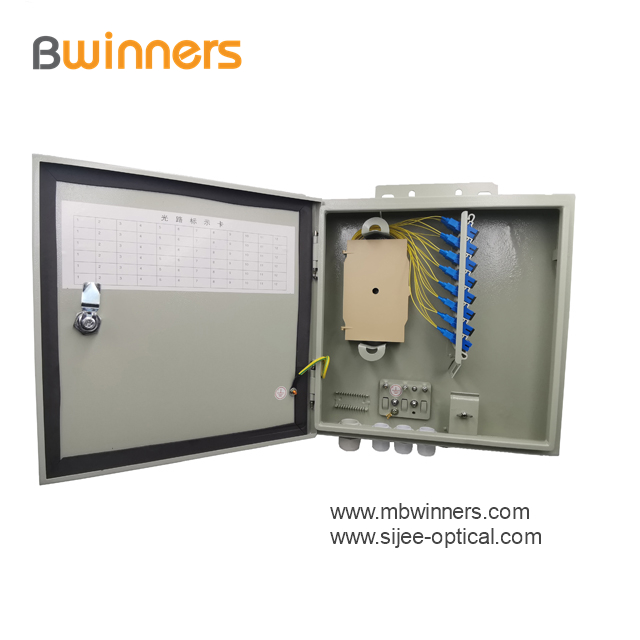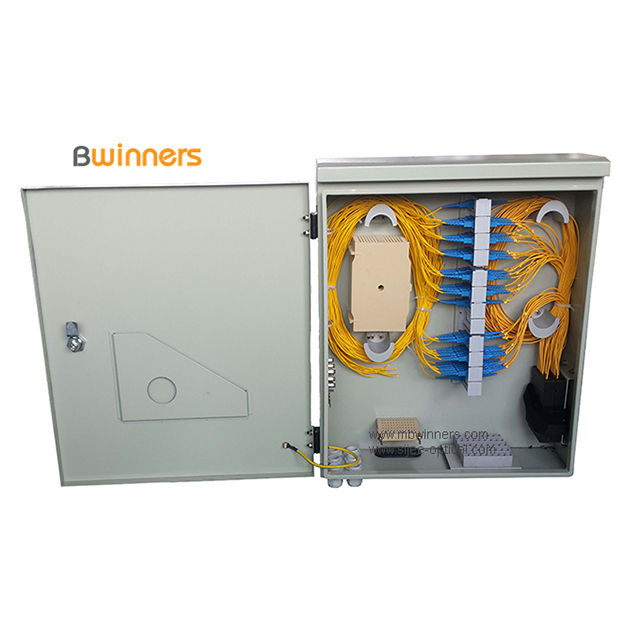The demand for wireless 3G, high-definition video, high-speed broadband Internet access and cloud computing has driven the rapid growth of network IP traffic. People's demand for communication bandwidth is increasing. Improving transmission rate is an important technology to improve transmission bandwidth. At present, the highest single-channel commercial transmission rate for large-scale application of communication network is 40G, 100G optical transmission is about to be put into commercial use, and 400G and 1T ultra-high-speed optical transmission are also in full swing. There are new transmission records in the world. The transmission test has reached the transmission record of a single light source 32T optical transmission.
40GE/100GE Ethernet technology40GE/100GE Ethernet is the current maximum bandwidth and highest rate Ethernet interface. In June 2010, the International Standards Organization IEEE officially released the IEEE802.3ba 40GE/100GE Ethernet standard. It has been clarified in the standard that 40G/100G Ethernet still uses the 802.3MAC standard Ethernet frame format, retains the minimum and maximum frame length of the 802.3 standard, and only supports full-duplex operation.
Due to the high 40GE/100GE rate, the 40GE/100GE PMA (physical medium attached) sublayer and the PMD (physical medium dependent) sublayer have a larger change than the 10GE. The 40GE/100GE MAC and PHY interface is from the original XGMII. The interface evolved into XLGMI interface (40GE) and CGMII (100GE). The capacity of XLGMII/CGMII interface was increased from 10G to 40G and 100G. The data channel bit width was increased from 32bit to 64bit. At the same time, the PHY (physical layer) hierarchy has more FEC. (Forward error correction) function sublayer.
The 40GE/100GE PMA layer adopts parallel multi-channel processing and adopts MLD (Multi-Channel Allocation) architecture, as shown in the figure.

High-rate optical transmission is affected by fiber chromatic dispersion, polarization mode dispersion (PMD), and nonlinear effects, and transmission distance is severely limited. In theory, the dispersion tolerance decreases with the square of the transmission rate. The dispersion tolerance of the 40G system is only 1/16 of that of the 10G system, and the dispersion tolerance of the 100G system is only 1/100 of the 10G system. Therefore, in order to achieve 40G/100G ultra-high speed optical transmission, the system's requirements for optical signal-to-noise ratio (OSNR) and dispersion tolerance must be reduced to overcome the effects of nonlinear effects.
At present, there are a variety of means available, such as super FEC technology, RAMAN amplification technology, dispersion management technology, new modulation and coding technology, etc. Among them, the new modulation pattern is the most critical technical means for ultra-high speed optical transmission of 100G and above.

There are many modulation and coding techniques, such as NRZ, DRZ, ODB and PSBT based on intensity modulation, DPSK and DQPSK based on phase modulation, and DP-QPSK combined with polarization multiplexing. The above table is a comparison of the main performance of various coding techniques.
The analysis shows that no technology can do all the best, each technology has its own most suitable application scenario. Choosing the right technology for different scenarios is the best choice for the current phase. In addition, in the ultra-high speed system, the following polarization multiplexing and optical orthogonal frequency division multiplexing (OFDM) techniques can also be adopted to improve the spectral efficiency of the optical signal and improve the transmission capacity of the line.
Coherent receptionIn terms of receiving optical signals, the use of new receiving techniques can also overcome the effects of line damage. In ultra-high-speed systems, the importance of coherent detection has become widespread, and coherent detection is a key technology to solve transmission damage.
The basic principle of the coherent detection technique is that the receiving end coherently couples the received optical signal with a localized vibrating signal, and then uses a balanced receiver for detection. The coherent receiver performs phase detection on the received signal, converts the optical signal into an electrical signal, and directly passes through the digital signal processing, and uses DSP (digital signal processor) to demultiplex the electronic polarization of the signal, and uses electronic dispersion compensation in combination. The effect of polarization mode dispersion is suppressed. In ultra-high-speed coherent optical receivers, the most important core devices are high-speed ADC (analog-to-digital conversion) devices and high-speed DSP (digital signal processor) chips, which use algorithms to achieve electrical domain equalization and dispersion compensation.
The coherent light detection technique detects the phase and polarization state of the optical signal in addition to detecting the amplitude of the optical signal. Coherent detection is much more complicated than direct detection, but this method is especially suitable for DQPSK demodulation applications with polarization multiplexing, because it can effectively utilize the high optical gain of coherent detection and the ability to detect phase, which is highly sensitive to the modulation format. Probing demodulation. Therefore, polarization multiplexing + DQPSK + coherent detection is the best combination of 40G, 100G and above speed ultra-high speed systems. At present, many manufacturers have launched or are launching 40G, 100GQPSK coherent detection optical transceiver modules.
Photonic Integration (PIC) TechnologyAs mentioned above, in ultra-high-speed systems with 40G/100G and above, multi-phase modulation (such as DQPSK) and multi-level quadrature amplitude modulation (M-QAM) must be used to improve the spectral efficiency of optical signal transmission. , to reduce the symbol rate of signal transmission, reduce the nonlinearity of optical signal transmission, dispersion, optical signal-to-noise ratio and other aspects to achieve long-distance transmission. The development and application of the above technologies are inseparable from photonic integration technology.
Photonic Integration (PIC) technology reduces the size and complexity by integrating multiple discrete optical devices onto a single substrate. The need for low cost, low power consumption and small size is an important factor driving the development of photonic integration technology. Traditional optical communication devices and subsystems consist of separate devices: separate lasers, modulators and control units, or separate filters and waveguides, which are separately produced and then assembled in some way. A large number of manual operations, high cost and large size.
PIC is increasingly being used in the design and fabrication of optical devices. The packaging of optical devices in PIC has become a reality and has begun to be applied.
The integration of different devices and the integration of different functions will be the mainstream of optical device technology. PIC is the inevitable evolution direction of optical devices, and the development of optical devices will be more integrated.
Ultra-high-speed optical communication has many key technologies. In addition to the new technologies introduced above, there are electronic dispersion compensation technology and super FEC technology. The emergence of these new technologies has opened another door for ultra-high-speed optical communications. In 400G and 1T optical transmission, technologies such as multi-level modulation, polarization multiplexing, OFDM, and coherent reception can be combined to achieve longer transmission distances. At the same time, the application of these technologies must rely on the development of photonic integration technology. Only by achieving greater integration, smaller size, and lower cost can commercialization be realized.
As the main force of national optical communication, Fiberhome Communications has conducted in-depth research on ultra-high-speed optical transmission, and has made significant progress and breakthroughs. It has successfully realized the common single mode of 1T coherent optical orthogonal frequency division multiplexing (CO-OFDM) 1040km. The fiber is transmitted without error. Based on the existing level of electronic and optoelectronic devices, this achievement technology proposes a model of multi-wavelength homogenous low-phase noise photonic carrier signal generation, and realizes the ultra-high-speed transmission rate of 1-T by multi-band multiplexing of frequency cyclic shift. The result also adopts a method based on orthogonal frequency division multiplexing (OFDM) modulation and digital coherent reception, which combines high-order modulation of 16QAM and low-density parity check (LDPC) code with high redundancy. Compared with the recent report of the highest recorded single wave 1-T600 km system in the world, the speed and distance of the "information high-speed rail" is the highest recorded in the same system in the world.
Outdoor Fiber Optical Distribution Box(Metal)
Termination Box Outdoor Wall Mountable available FC/SC/ST/LC Adapter
Standard wall mount enclosure is mainly used for connecting the indoor/outdoor optical cables, patch cords and pigtails. It can be wall mounted or pole mounted and provides various accessories to avoid any unexpected damage to the fiber.
This types of fiber termination box as distribution box, it is usually used in between wiring closets and equipment for fiber optic cable termination, use and management.
Note: This box does not come with any adapters and pigtails. If you need them, we can install them for you with few charges.
Features
Suitable for ribbon and bunchy fiber cables Fiber splice trays can be installed and changed easily Small dimension and exquisite and easy for operation Standard cell structure size, wall mounted patch panel Capacity: 12-144 ports Suitable for SC, FC, ST Simplex & LC Duplex
Specifications
Technology: Electrostatic spraying Material: SPCC or AL or customized Color: Milk White Compliant with ISO: 9001, RoHS, UL, Bellcore certification Atmosphere pressure: 70KPa~106KPaType: Single door open


Fiber Optic Box,FTTH Distribution Box,Fiber Terminal Box,Outdoor Fiber Optic Distribution Box
Sijee Optical Communication Technology Co.,Ltd , https://www.sijee-optical.com